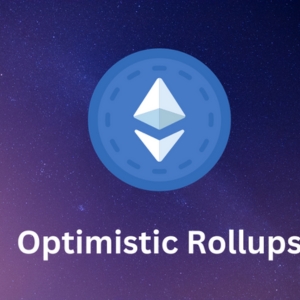Building the Future: A Deep Dive into Optimistic Rollups InfrastructurePosted by opstackss on April 24th, 2024  Optimistic Rollups have emerged as a promising Layer 2 scaling solution for Ethereum, offering a way to improve transaction throughput and reduce costs without compromising security. Understanding the infrastructure behind Optimistic Rollups is crucial for grasping how this technology is transforming the Ethereum ecosystem. In this article, we'll take a deep dive into the infrastructure of Optimistic Rollups, exploring its architecture, the role of sequencers and validators, fraud proofs, and how it enhances Ethereum's scalability and efficiency. The Architecture of Optimistic Rollups:Optimistic Rollups operate on the principle of optimistic execution, processing most transactions off-chain and later submitting them to the Ethereum mainnet for validation. This architecture significantly improves Ethereum's scalability by reducing the computational load on the mainnet while maintaining the security guarantees of Ethereum. Key Components:
Role of Sequencers in Optimistic Rollups:Sequencers play a critical role in the infrastructure of Optimistic Rollups. They are responsible for collecting transactions, executing them off-chain, and producing blocks. Here's how they operate:
Validators in Optimistic Rollups:Validators are another crucial component of Optimistic Rollups infrastructure. They play a role in ensuring the integrity and security of the network. Here's how validators contribute to the infrastructure:
Benefits of Optimistic Rollups Infrastructure:1. Scalability:Optimistic Rollups significantly increase Ethereum's transaction throughput by processing transactions off-chain. This scalability allows for more efficient and faster transactions, addressing the network congestion seen on the Ethereum mainnet. 2. Cost Efficiency:By conducting most transactions off-chain, Optimistic Rollups reduce gas fees for users. This cost efficiency makes DeFi applications and transactions more accessible to a wider audience. 3. Security:Despite processing transactions off-chain, Optimistic Rollups maintain security through fraud proofs and validator checks. This ensures that only valid transactions are included in the final state on the Ethereum mainnet. Real-World Applications of Optimistic Rollups:1. Uniswap v3 with Optimism:Uniswap, one of the leading decentralized exchanges (DEXs) in DeFi, has implemented Optimistic Rollups with the Optimism protocol. This integration has significantly reduced transaction costs for users while maintaining the security and integrity of the platform. 2. Synthetix with Optimistic Ethereum:Synthetix, a platform for creating and trading synthetic assets, is exploring Optimistic Rollups with the Optimistic Ethereum protocol. This integration aims to enhance the trading experience for users by reducing fees and improving transaction throughput. Conclusion:Optimistic Rollups' infrastructure represents a significant step forward in Ethereum's evolution, addressing scalability and cost efficiency while maintaining security. The architecture, with sequencers processing transactions off-chain and validators ensuring the integrity of the network, allows for a more efficient and scalable Ethereum ecosystem. Real-world applications like Uniswap and Synthetix demonstrate the tangible benefits of Optimistic Rollups, attracting more users and liquidity to the Ethereum ecosystem. As Ethereum continues to upgrade with Optimistic Rollups, we can expect to see further innovation and growth in the DeFi space and beyond.
Like it? Share it! |


